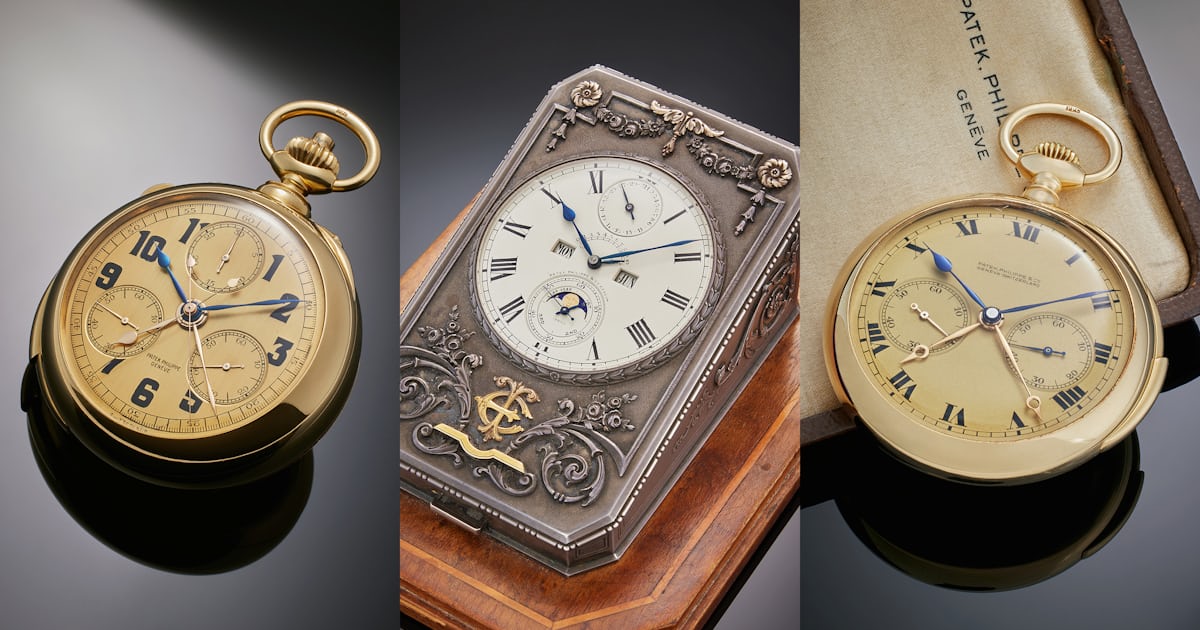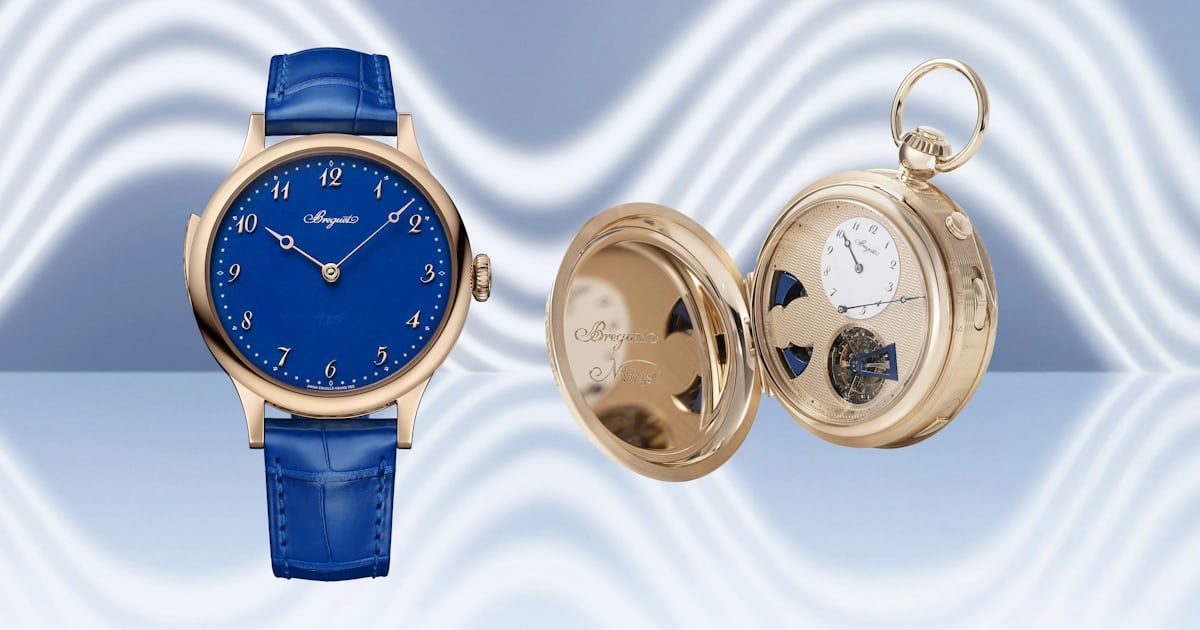Editor’s pick — Accessory quick take: key highlight (movement/specs for watches, materials/finish, limited run, pricing tier) in 1–2 lines.

Sotheby’s has just announced a special collection of timepieces that will be the centerpiece of their upcoming United States fall auction. ‘Exceptional Discoveries: The Olmsted Complications Collection‘ represents six decades of collecting from the late Robert M. Olmsted, a prolific yet private collector who assembled an enviable collection of historically significant (and sometimes literature-changing) timepieces of both exceptional complication, quality, and provenance. Some of his watches and clocks were owned by titans of industry and collecting, like Henry Graves Jr. The auction house is already revealing a few of these timepieces, and they’re the kind of things that lovers of history dream of seeing, let alone owning.

Double Movement Split Seconds Minute Repeating Watch , 1924, est. $500,000 – 1 million.
Olmsted was a collector’s collector, buying pieces while he was still in college at Princeton in the 1960s. Not long after starting his collecting journey, in 1965, Olmsted acquired the “John Motley Morehead Double Movement Split Seconds Minute Repeating Watch” from 1924 (estimate: $500,000-$1 million).
Thanks to Olmsted’s records, we know legendary New York dealer Ephraim Greenberg brokered the sale, and Olmsted was the second owner of the watch. The first owner, who commissioned this piece, was John Motley Morehead III, an American industrialist, scientist, politician, and philanthropist who once served as U.S. Ambassador to Sweden.

Double Movement Split Seconds Minute Repeating Watch , 1924, est $500,000 – 1 million


The watch is one of only two known to have been made by Patek Philippe (or, according to Sotheby’s, by any other maker to date) featuring two independent movements, connected only by their shared winding mechanism. The crown can wind one movement clockwise, the other counter-clockwise, and once both movements are fully wound, the crown locks, preventing any further rotation.
The construction of the movement is extraordinary, as is the doré dial that feels more practical and functional than simply elegant, lending some credence to the speculation that the two movements aren’t just for independent timezone but for celestial tracking functions (as Morehead had a passion for astronomy).

Patek Philippe open-faced minute repeater with a double movement, 1921, estimate $300,000 – 500,000
The second watch, though lacking the chronograph function, is another double-movement Patek Philippe from 1921 (est. $300,000 – $500,000), also for Morehead. Unlike the previous, the crown winds both movements in the same direction, and has one set of hands for the civil time and another for sidereal time. The watch yet again has a doré dial with a period-correct long signature and Roman numerals.

Patek Philippe open-faced minute repeater with a double movement, 1921, estimate $300,000 – 500,000

Patek Philippe open-faced minute repeater with a double movement, 1921, estimate $300,000 – 500,000
Finally, in 1976, Olmsted bought this silver Patek Philippe paperweight clock, movement no. 198.159 and case no. 292.119, dating to circa 1927 (est. $500,000 – $1 million). There are only three known examples of such clocks. Two were made for the legendary collectors James Ward Packard and Henry Graves Jr., and both are now owned by the Patek Philippe Museum in Geneva. This is a rare opportunity to acquire a historically significant clock that was previously unknown to the public.

Patek Philippe Paper Weight Clock, 1928, est $500,000 – 1 million
While these three watches are the stars that Sotheby’s has teased so far, Olmsted’s collection also included 80 long-unseen timepieces from Audemars Piguet, Abraham Louis Breguet, Dent, Charles Frodsham, S. Smith & Sons, Henry Capt, A. Lange & Söhne, Rolex, and others. For many of the lots, this will be the first time the watches have appeared on the public market. I’ll be closely watching to see what other watches may come up for sale, as it sounds like a horological historian’s dream collection.

The Olmsted Complications Collections doesn’t land at Sotheby’s by chance, but there is some fortuitous timing. Daryn Schnipper (Sotheby’s Chairman Emeritus, International Watch Division) was a close friend of Mr. Olmsted’s for decades, and his family entrusted her with the collection. However, the auction market is still contending with the impact of U.S. tariffs on Switzerland, which could soften results at the centerpiece Geneva auctions. Auction houses have worked overtime to find watches within New York for the U.S.-based auctions. Securing a major collection of historically significant watches, such as Olmsteds, could bolster Sotheby’s competitive edge for the final sales of the year.
For more information on the upcoming Sotheby’s Watch Department auctions, visit the company’s website.
Source: www.hodinkee.com — original article published 2025-10-09 12:00:00.
Read the full story on www.hodinkee.com → [source_url]



